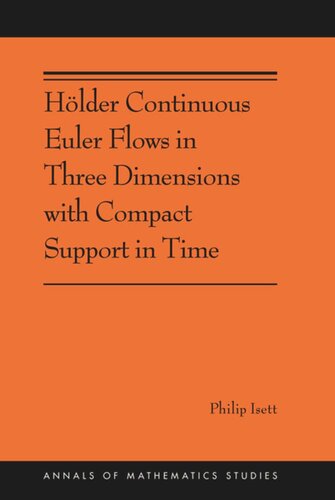

Most ebook files are in PDF format, so you can easily read them using various software such as Foxit Reader or directly on the Google Chrome browser.
Some ebook files are released by publishers in other formats such as .awz, .mobi, .epub, .fb2, etc. You may need to install specific software to read these formats on mobile/PC, such as Calibre.
Please read the tutorial at this link: https://ebookbell.com/faq
We offer FREE conversion to the popular formats you request; however, this may take some time. Therefore, right after payment, please email us, and we will try to provide the service as quickly as possible.
For some exceptional file formats or broken links (if any), please refrain from opening any disputes. Instead, email us first, and we will try to assist within a maximum of 6 hours.
EbookBell Team

5.0
40 reviewsMotivated by the theory of turbulence in fluids, the physicist and chemist Lars Onsager conjectured in 1949 that weak solutions to the incompressible Euler equations might fail to conserve energy if their spatial regularity was below 1/3-Hölder. In this book, Philip Isett uses the method of convex integration to achieve the best-known results regarding nonuniqueness of solutions and Onsager's conjecture. Focusing on the intuition behind the method, the ideas introduced now play a pivotal role in the ongoing study of weak solutions to fluid dynamics equations.
The construction itself—an intricate algorithm with hidden symmetries—mixes together transport equations, algebra, the method of nonstationary phase, underdetermined partial differential equations (PDEs), and specially designed high-frequency waves built using nonlinear phase functions. The powerful "Main Lemma"—used here to construct nonzero solutions with compact support in time and to prove nonuniqueness of solutions to the initial value problem—has been extended to a broad range of applications that are surveyed in the appendix. Appropriate for students and researchers studying nonlinear PDEs, this book aims to be as robust as possible and pinpoints the main difficulties that presently stand in the way of a full solution to Onsager's conjecture.